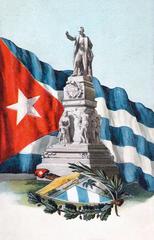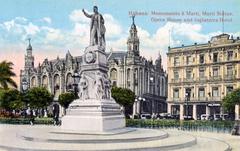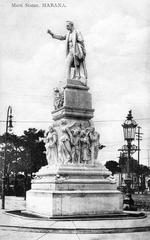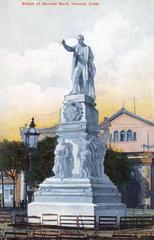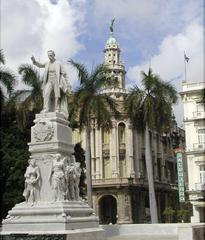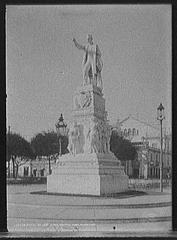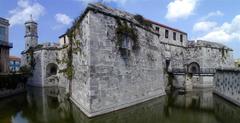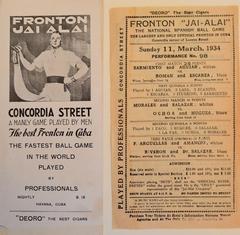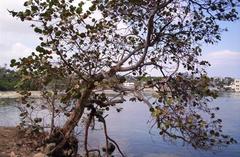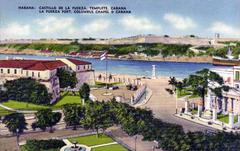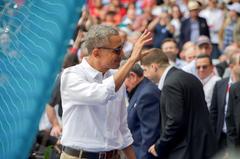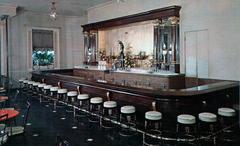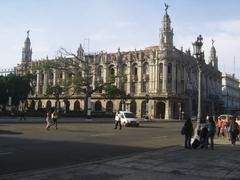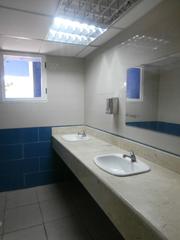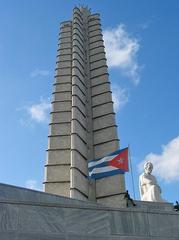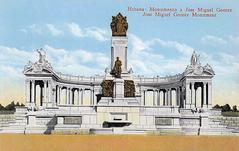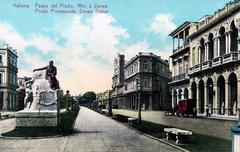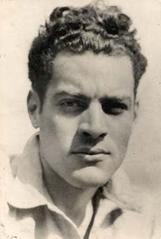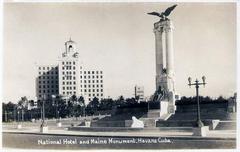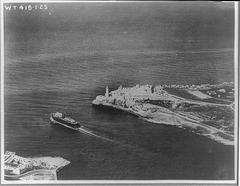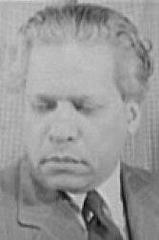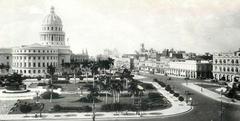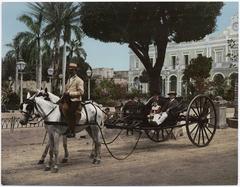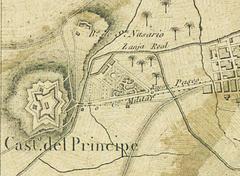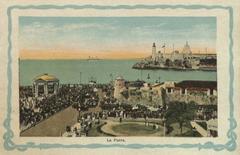
Statue of José Martí, Havana: Visiting Hours, Tickets, and Comprehensive Travel Guide
Date: 14/06/2025
Introduction
The Statue of José Martí in Havana is more than a monument—it is a living testament to Cuban identity, history, and culture. Located at the iconic Plaza de la Revolución, this memorial honors José Martí, revered as the “Apostle of Cuban Independence,” and stands as a focal point for political events, cultural gatherings, and national reflection. This detailed guide explores the memorial’s history, architecture, symbolism, visitor logistics, and its enduring significance in Cuba and beyond.
Explore below for essential details on visiting times, tickets, accessibility, guided tours, and travel tips to ensure a meaningful and well-informed experience at one of Havana’s most prominent landmarks (Adequate Travel, Alluring World, Wikipedia).
Table of Contents
- Introduction
- Historical Background and Early Commemoration
- Creation of the Havana Memorial
- Architectural Features and Artistic Symbolism
- Visitor Information: Hours, Tickets, and Guided Tours
- Accessibility and Facilities
- Nearby Attractions in Havana
- Martí Monuments in Cuba and Worldwide
- Cultural and Political Significance
- Restoration and Preservation
- Frequently Asked Questions (FAQ)
- Practical Travel Tips
- Conclusion
- References
Historical Background and Early Commemoration
José Martí’s legacy as a poet, journalist, and revolutionary leader has been honored in Cuba since the early 20th century. Following his death in 1895 during the Cuban War of Independence, public admiration led to the erection of plaques, busts, and small monuments throughout the island. These early commemorations laid the groundwork for more ambitious tributes, notably the grand memorial in Havana’s Plaza de la Revolución, reflecting Martí’s central role in shaping Cuban national identity.
Creation of the Havana Memorial
Plans for a monumental tribute to Martí in Havana emerged in the 1920s but faced numerous delays due to political and economic instability. The project gained momentum in the 1950s under President Fulgencio Batista, with architect Enrique Luis Varela and sculptor Juan José Sicre tasked with its realization. The design competition produced the distinctive star-shaped tower and contemplative marble statue that today define the José Martí Memorial (Adequate Travel, Alluring World).
Architectural Features and Artistic Symbolism
The Tower and Statue
The memorial’s centerpiece is a 109-meter, five-pointed star-shaped tower—the tallest in Havana—crafted from local grey marble. At its base sits a 17–18 meter white marble statue of Martí, portrayed in a reflective pose, symbolizing his status as an intellectual and moral guide. The star motif references the Cuban flag and underscores Martí’s role as a guiding light for the nation (Alluring World, Wikipedia).
Artistic Details
Sculptor Juan José Sicre’s attention to detail in Martí’s pose and expression conveys dignity, contemplation, and resolve. The statue is surrounded by columns representing the original Cuban provinces, further rooting it in national history.
Symbolism
Martí’s seated position, the book in his hand, and the scale of the monument emphasize the power of ideas and words over violence. The use of white marble symbolizes purity and endurance, while the star-shaped tower unites the monument with broader themes of freedom and independence (Radio Grito de Baire, Alluring World).
Visitor Information: Hours, Tickets, and Guided Tours
Opening Hours
- Tuesday–Sunday: 9:00 AM – 5:00 PM (last entry at 4:30 PM)
- Closed: Mondays and major public holidays (Cuban Travel Agency)
Ticket Prices
- Adults: 5 CUC
- Students/Seniors: Discounted rates
- Elevator to Observation Deck: Additional 2 CUC
- Tickets: Purchase onsite; always request an official ticket and clarify inclusions (WhichMuseum)
Guided Tours
- Multilingual tours (English, Spanish, French) available daily
- Book onsite or through official tourism platforms
- Virtual tours offered for remote exploration
Accessibility and Facilities
- Wheelchair Access: Ramps and elevators available (confirm elevator status on arrival)
- Restrooms: Onsite, with accessible options
- Language: Most exhibits are in Spanish; guides or translation apps recommended for non-Spanish speakers
- Photography: Allowed throughout, including observation deck
Bring water and wear comfortable shoes, especially if planning to climb the stairs to the observation deck.
Nearby Attractions in Havana
While visiting the memorial, consider exploring:
- National Museum of Fine Arts
- Malecón Waterfront
- Historic Old Havana (Habana Vieja)
- Plaza de la Revolución murals of Che Guevara and Camilo Cienfuegos
- National Library of Cuba
- Tres Reyes del Morro Castle (WhichMuseum)
Martí Monuments in Cuba and Worldwide
Martí’s legacy is celebrated throughout Cuba, notably at the Cementerio Santa Ifigenia in Santiago de Cuba, home to his mausoleum and a daily changing-of-the-guard ceremony (Adequate Travel). Cities like Cienfuegos, Camagüey, and Holguín feature their own Martí statues and parks.
Internationally, Martí monuments appear in cities such as Miami, New York, and Madrid, symbolizing his enduring influence on global struggles for justice and independence (Google Arts & Culture).
Cultural and Political Significance
The José Martí Memorial is central to Cuban civic and political life. It has hosted pivotal rallies, speeches by leaders like Fidel Castro, and national celebrations, particularly on Martí’s birthday (January 28) and the anniversary of his death (May 19) (PeoplesWorld). Martí’s writings are foundational to Cuban revolutionary ideology, and his presence in public art, education, and celebrations remains profound (LoveCuba, TravelPassionate).
Restoration and Preservation
The memorial has undergone significant restoration, particularly in the early 2000s, to address structural wear from Havana’s climate. These efforts are ongoing, with support from the Cuban government and international cultural organizations, ensuring the site remains accessible and well-preserved for future generations.
Frequently Asked Questions (FAQ)
Q: What are the visiting hours?
A: Tuesday–Sunday, 9:00 AM–5:00 PM; closed Mondays and major holidays.
Q: How much is admission?
A: 5 CUC for adults; discounts for students and seniors; observation deck elevator 2 CUC extra.
Q: Are guided tours available?
A: Yes, in multiple languages, bookable onsite or online.
Q: Is the site accessible for visitors with disabilities?
A: Yes, with ramps and elevators (check elevator status).
Q: Can I take photographs?
A: Yes, photography is encouraged at designated spots and the observation deck.
Q: What’s the best time to visit?
A: Early morning or late afternoon for fewer crowds and the best light.
Practical Travel Tips
- Arrive early to avoid crowds, especially during events.
- Bring cash in local currency; credit card acceptance is limited.
- Hire a guide for richer historical context, especially if you don’t speak Spanish.
- Combine nearby attractions for a comprehensive Havana experience.
- Check elevator status if you require accessibility to the observation deck.
- Dress respectfully as the site holds national significance.
Conclusion
The José Martí Memorial in Havana is a profound destination for anyone interested in Cuba’s history, art, and society. Its grand architecture, evocative symbolism, and vibrant civic life make it a must-see for travelers. With accessible facilities, informative exhibits, and the best views in Havana, the memorial offers a unique window into the Cuban soul.
Download the Audiala app for interactive guides, up-to-date information, and exclusive media content. Follow us on social media for travel inspiration, tips, and cultural insights. Make sure the José Martí statue is at the top of your Havana itinerary to experience the enduring legacy of Cuba’s national hero (LoveCuba, TravelPassionate, Havana Times).
References
- Adequate Travel
- Alluring World
- Havana Times
- Wikipedia
- LoveCuba
- TravelPassionate
- Radio Grito de Baire
- Google Arts & Culture
- Cuban Travel Agency
- WhichMuseum
- Trip Cuba
- RentalCarCuba
- PeoplesWorld
